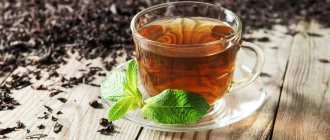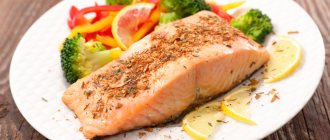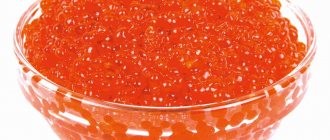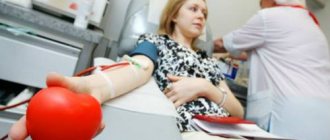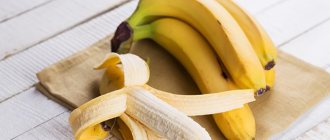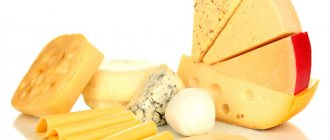A high level of hemoglobin in the blood significantly increases the viscosity of the blood, increases the likelihood of its clotting, which is why blood clots form, and also increases the load on the internal walls of the vessels (which subsequently causes them to lose tone and become deformed).
What do doctors recommend doing if you have elevated hemoglobin? First of all, adjust your diet, include foods that help normalize the concentration of blood cells, and also slow down the synthesis of new hemoglobin molecules.
What diet should you follow for this? Which foods should you definitely add to your diet, and which should you completely exclude?
Let us remind you that we have previously provided a list of 7 products to reduce hemoglobin.
How does diet affect hemoglobin?
According to research , hemoglobin levels actively increase when consuming foods rich in:
- iron;
- vitamins A, C, E, B-group;
- omega-3 unsaturated fatty acids (as well as omega-6 and omega-9).
Accordingly, they should be excluded, if possible, from the diet (not completely, consuming in a minimal amount purely to maintain the correct balance of nutrients in the body).
The hemoglobin molecule consists of protein (globin) and iron. The process of their connection is stimulated by the above-mentioned vitamins and micronutrients.
Even if you consume foods that are not rich in iron, but there is a deficiency of vitamins in the body, the bioavailability of iron will be reduced to a minimum. That is, it simply will not be absorbed in the required quantity.
In what cases does high hemoglobin most often occur? If the patient’s diet is dominated by:
- products of animal origin (meat, meat by-products);
- seafood;
- citrus;
- chocolate (and other desserts that contain large quantities of cocoa).
Let's remember that in the last article we looked at 20 products that increase hemoglobin.
Moreover, in such patients the amount of plant foods rich in fiber in the diet is minimal.
Sample menu
Increased hemoglobin poses the greatest danger to men and women during pregnancy and menopause due to the risk of blood clots and clogged arteries.
Therefore, it is for these population groups that the diet in the first days of the week should be strictly vegetarian, without animal proteins.
Breakfast:
- semolina milk porridge;
- bran bread - 50 g;
- butter - 10 g;
- hard cheese;
- coffee with milk.
Porridge and coffee can be sweetened with sugar , and if desired, add vanillin or cinnamon (at the tip of a knife).
1st snack - baked apple or 100 g of natural yogurt.
Dinner:
- vegetarian rassolnik with bran bread (50 g);
- cabbage stewed with vegetable oil with carrots, apple;
- soft-boiled or poached egg;
- baked potato;
- Ceylon black tea with milk and sugar (optional).
2nd snack - pear or banana, baked for 10 minutes. at a temperature of 180 degrees, or a glass of kefir.
Dinner:
- cottage cheese;
- cranberry or quince jam;
- fruit jelly or cranberry juice.
At night - a glass of kefir with a spoonful of jam.
The amount of fermented milk products in the afternoon can be increased , as they contain calcium, which interferes with the absorption of iron.
After two weeks, a blood test is done . If the hemoglobin level has decreased, then men and pregnant women are allowed to eat 100 g of white poultry meat for lunch. Women during menopause should continue their diet by increasing the amount of dairy products and cooked vegetables.
In women of reproductive age (not pregnant), hemoglobin rarely increases. This can only be due to excessive stress or illness. In this case, the diet is prescribed by the attending physician or a professional nutritionist.
How to reduce it in men?
Men traditionally have a slightly faster metabolism than women. Often, increased hemoglobin is a consequence of a violation of the water-salt balance.
The fix for this is extremely simple - you need to drink more , you can also include honey in your diet (this is the richest product in mineral microelements, which help normalize the water-salt balance).
It should also be noted that a whole range of metabolic processes in the male body is regulated by testosterone (a sex hormone). With its deficiency in the blood, metabolism slows down, glucose is actively transformed into fatty compounds, and protein breakdown is also slow.
How to normalize testosterone levels? Doctors recommend including aphrodisiac foods in your diet. These include many spices, as well as garden herbs. But alcohol should be completely abandoned during the treatment period; it is especially important not to drink red wine - this drink dramatically increases the level of hemoglobin in the blood.
It is also important to sharply limit the consumption of fish and seafood, which increase hemoglobin. The body should get proteins from lean varieties of meat, the best option is chicken breast, since it contains a minimum of fat, and there is also much less iron than in pork or beef.
Men are also recommended to comprehensively reduce the number of calories consumed daily and stick to 1.5 – 2 thousand kilocalories per day (with an average norm of 3000 kilocalories). This will help reduce the load on the gastrointestinal tract and speed up the digestion of foods rich in complex carbohydrates. Thus, the body will receive a sufficient amount of energy, but the absorption of protein foods (these foods contain more iron) will slow down.
Another feature of the diet for men is a complete, varied diet. It is important to eat at least 4–6 times a day, in small portions. This will also help normalize blood viscosity and normalize hemoglobin balance.
In mature men, after 40 years, the need for hemoglobin temporarily increases - this is a consequence of a sharp decrease in the level of testosterone in the blood.
Physical exercise and vitamin D (stimulates the accumulation of calcium in some tissues) are the best ways to level out the age-related decline in testosterone. Therefore, the most effective thing at this age is to simply walk in the fresh air and sunbathe as often as possible. The body does not receive as much vitamin D from food as it does in epithelial cells when exposed to ultraviolet radiation.
Fully or partially limited products
A diet for high hemoglobin includes excluding/limiting the use of:
- Meat/fish broths, fried foods, saturated fats (pork, lamb, beef, cooking fats).
- Fatty meats of domestic waterfowl (duck, goose), sausages, smoked meats;
- Fatty dairy/fermented milk products (butter, cottage cheese, sour cream, cheese, cream).
- White fresh bread and bakery products.
- Sugar, sweet pastries, cream cakes, puff pastry products, cakes.
- Legumes of all types.
- Offal - liver (beef/pork), kidney, brain.
- Various types of cabbage, radishes, watercress, turnips, radishes.
- Garden herbs (parsley, dill, basil, coriander).
- Light grape and pomegranate juice.
Table of prohibited products
| Proteins, g | Fats, g | Carbohydrates, g | Calories, kcal | |
Vegetables and greens | ||||
| greenery | 2,6 | 0,4 | 5,2 | 36 |
| beans | 6,0 | 0,1 | 8,5 | 57 |
| cabbage | 1,8 | 0,1 | 4,7 | 27 |
| broccoli | 3,0 | 0,4 | 5,2 | 28 |
| boiled cauliflower | 1,8 | 0,3 | 4,0 | 29 |
| parsley | 3,7 | 0,4 | 7,6 | 47 |
| radish | 1,2 | 0,1 | 3,4 | 19 |
| white radish | 1,4 | 0,0 | 4,1 | 21 |
| red radish | 1,2 | 0,1 | 3,4 | 20 |
| black radish | 1,9 | 0,2 | 6,7 | 35 |
| salad | 1,2 | 0,3 | 1,3 | 12 |
| celery | 0,9 | 0,1 | 2,1 | 12 |
| soybeans | 34,9 | 17,3 | 17,3 | 381 |
| asparagus | 1,9 | 0,1 | 3,1 | 20 |
| dill | 2,5 | 0,5 | 6,3 | 38 |
| beans | 7,8 | 0,5 | 21,5 | 123 |
| lentils | 24,0 | 1,5 | 42,7 | 284 |
| spinach | 2,9 | 0,3 | 2,0 | 22 |
| sorrel | 1,5 | 0,3 | 2,9 | 19 |
Fruits | ||||
| avocado | 2,0 | 20,0 | 7,4 | 208 |
| oranges | 0,9 | 0,2 | 8,1 | 36 |
| bananas | 1,5 | 0,2 | 21,8 | 95 |
| pomegranate | 0,9 | 0,0 | 13,9 | 52 |
| grapefruit | 0,7 | 0,2 | 6,5 | 29 |
| lemons | 0,9 | 0,1 | 3,0 | 16 |
| mango | 0,5 | 0,3 | 11,5 | 67 |
| tangerines | 0,8 | 0,2 | 7,5 | 33 |
| mulberry | 0,7 | 0,0 | 13,6 | 52 |
Berries | ||||
| cowberry | 0,7 | 0,5 | 9,6 | 43 |
| blueberry | 1,0 | 0,0 | 8,2 | 35 |
| blackberry | 2,0 | 0,0 | 6,4 | 31 |
| viburnum | 0,0 | 0,0 | 7,0 | 26 |
| cranberry | 0,5 | 0,0 | 6,8 | 26 |
| chokeberry | 1,5 | 0,2 | 10,9 | 55 |
Mushrooms | ||||
| mushrooms | 3,5 | 2,0 | 2,5 | 30 |
Cereals and porridges | ||||
| buckwheat (kernel) | 12,6 | 3,3 | 62,1 | 313 |
| semolina | 10,3 | 1,0 | 73,3 | 328 |
| white rice | 6,7 | 0,7 | 78,9 | 344 |
Flour and pasta | ||||
| pasta | 10,4 | 1,1 | 69,7 | 337 |
Confectionery | ||||
| jam | 0,3 | 0,2 | 63,0 | 263 |
| jam | 0,3 | 0,1 | 56,0 | 238 |
| candies | 4,3 | 19,8 | 67,5 | 453 |
| pastry cream | 0,2 | 26,0 | 16,5 | 300 |
| cookie | 7,5 | 11,8 | 74,9 | 417 |
Ice cream | ||||
| ice cream | 3,7 | 6,9 | 22,1 | 189 |
Cakes | ||||
| cake | 4,4 | 23,4 | 45,2 | 407 |
Raw materials and seasonings | ||||
| mustard | 5,7 | 6,4 | 22,0 | 162 |
| mayonnaise | 2,4 | 67,0 | 3,9 | 627 |
Dairy | ||||
| milk 3.6% | 2,8 | 3,6 | 4,7 | 62 |
| milk 4.5% | 3,1 | 4,5 | 4,7 | 72 |
| cream | 2,8 | 20,0 | 3,7 | 205 |
| sour cream 25% (classic) | 2,6 | 25,0 | 2,5 | 248 |
Cheeses and cottage cheese | ||||
| cheese | 24,1 | 29,5 | 0,3 | 363 |
| cottage cheese 11% | 16,0 | 11,0 | 1,0 | 170 |
| cottage cheese 18% (fat) | 14,0 | 18,0 | 2,8 | 232 |
Meat products | ||||
| pork | 16,0 | 21,6 | 0,0 | 259 |
| pork liver | 18,8 | 3,6 | 0,0 | 108 |
| pork kidneys | 13,0 | 3,1 | 0,0 | 80 |
| pork fat | 1,4 | 92,8 | 0,0 | 841 |
| salo | 2,4 | 89,0 | 0,0 | 797 |
| beef liver | 17,4 | 3,1 | 0,0 | 98 |
| beef kidneys | 12,5 | 1,8 | 0,0 | 66 |
| beef brains | 9,5 | 9,5 | 0,0 | 124 |
Sausages | ||||
| smoked sausage | 16,2 | 44,6 | 0,0 | 466 |
| smoked sausage | 9,9 | 63,2 | 0,3 | 608 |
| sausages | 10,1 | 31,6 | 1,9 | 332 |
| sausages | 12,3 | 25,3 | 0,0 | 277 |
Bird | ||||
| smoked chicken | 27,5 | 8,2 | 0,0 | 184 |
| duck | 16,5 | 61,2 | 0,0 | 346 |
| smoked duck | 19,0 | 28,4 | 0,0 | 337 |
| goose | 16,1 | 33,3 | 0,0 | 364 |
Fish and seafood | ||||
| smoked fish | 26,8 | 9,9 | 0,0 | 196 |
| salted fish | 19,2 | 2,0 | 0,0 | 190 |
| Red caviar | 32,0 | 15,0 | 0,0 | 263 |
| black caviar | 28,0 | 9,7 | 0,0 | 203 |
| mussels | 9,1 | 1,5 | 0,0 | 50 |
| canned fish | 17,5 | 2,0 | 0,0 | 88 |
Oils and fats | ||||
| butter | 0,5 | 82,5 | 0,8 | 748 |
| animal fat | 0,0 | 99,7 | 0,0 | 897 |
| cooking fat | 0,0 | 99,7 | 0,0 | 897 |
| * data is per 100 g of product | ||||
How to lower it in women?
The female body's need for iron and B vitamins is higher than that of the male body. Therefore, strict restriction of meat dishes is strictly contraindicated.
Doctors recommend giving preference to fermented milk products that reduce hemoglobin - they contain calcium, which best reduces the bioavailability of iron and helps normalize the hemoglobin balance in the blood.
The most calcium is found in goat's milk, cottage cheese, fatty sour cream, kefir, and fermented baked milk.
Physical activity is also extremely important for women - it speeds up metabolism, normalizes the biochemical composition of the blood, and also helps to normalize hormonal levels, which also indirectly affects the production of hemoglobin.
During pregnancy, high hemoglobin is the norm. In the first trimester, as a rule, its level decreases slightly, then it gradually increases and reaches its maximum in the third trimester (immediately before childbirth). It is strictly prohibited to artificially lower it during this period - this can harm the unborn child. Let us remind you that we reviewed 8 useful products for pregnant women in a separate article.
Women should also include the following foods in their diet:
- cereal porridge;
- baking and flour (in moderation, may increase symptoms of toxicosis in the early stages of pregnancy);
- green vegetables and fruits.
But you should avoid fish, nuts, and natural chocolate (it is better to give preference to white or milk).
Doctors also recommend that women temporarily increase the amount of sweets they consume (ideally, eat desserts based on fermented milk products). But you shouldn’t overuse it - excess glucose in the blood increases blood viscosity exponentially.
Pros and cons, contraindications
The main advantages of the diet:
- a beneficial effect on a slagged body, especially after prolonged use of medications;
- ease of preparation;
- cheapness and availability of products.
Lowering hemoglobin is much easier and cheaper than increasing it.
But sticking to vegetarianism for a long time is prohibited for people with:
- diabetes mellitus;
- intense physical activity;
- pregnancy and breastfeeding.
Drinking large amounts of fluid is contraindicated in some kidney and liver diseases. In these cases, the diet and drinking regime are agreed upon with a specialist.
Folk remedies
Among the traditional methods of treatment, the truly effective ones (and recommended by doctors themselves) are:
- Mumiyo with water. It’s easy to prepare: add 0.5 grams of mumiyo to 1 glass of water (or 1 tablet if used in this form). Drink on an empty stomach. This helps normalize the water-salt balance, reduce blood viscosity, and accelerate the absorption of calcium.
- Infusion based on burdock root. It also affects the water-salt balance and slows down metabolism. To prepare such a decoction, you need to mix 150 grams of fresh grated burdock roots with 1 liter of boiling water and leave until it cools completely. Take 100 milliliters 4 times a day before each planned meal.
- Horsetail tincture. It has a strong diuretic effect, reduces the concentration of sodium in the blood, and normalizes the metabolic rate. For preparation, dried pagons of the plant are used. 30 grams of these are poured into a glass of boiling water, left for 2 hours, and drunk in one gulp. The course of treatment is no more than 7 days, then a mandatory break is taken for 5–10 days (to minimize the load on the urinary system).
- Aloe based tincture. It is prepared as follows: 35 grams of aloe pulp (without needles) is poured with 200 milliliters of strong alcohol (preferably moonshine or alcohol). Leave for 1 week in a dark place at room temperature. Take 4 – 6 drops 3 times a day after meals. You can replace aloe with agave - the biochemical composition of these indoor flowers is almost identical.
- Tincture of calendula. Ready-made can be purchased at almost any pharmacy. But you can cook it yourself at home. You will need 15 grams of dry calendula base and 150 milliliters of vodka. Leave for only 2 days, take 1 teaspoon 2 times a day (after breakfast and dinner).
- Clove tincture. Although this is an extremely bitter remedy, it helps to quickly reduce the bioavailability of iron. To prepare the tincture, mix 8 dried clove inflorescences and 50 milliliters of vodka. Leave for 3 days. Take 5 drops 3 times a day. The main thing is not to overeat or drink. It is generally better to abstain from food and drink for the next 1.5 hours after using the product.
Recommended duration
The optimal duration of a vegetarian diet to reduce hemoglobin is 40 days.
If necessary, the doctor can extend it , but in most cases this is enough, since abuse of dairy and plant foods can lead to the formation of stones (oxalates).
You can get out of the diet by gradually introducing animal proteins into your diet:
- 1st week - boiled fish (100-150 g);
- 2nd week - fish and poultry (150 g each).
Then a blood test is done. If the hemoglobin level has not increased, then you can start eating beef, pork, nuts, avoiding confectionery, fried and canned food to avoid a relapse.
A dairy-vegetable diet for seven weeks can reduce hemoglobin to normal in the absence of pathologies. The main thing then is to stick to a healthy diet, avoiding physical overload and stress.
Other methods
If all of the above treatment methods do not bring the desired effect, doctors prescribe drug therapy. Basic recommendations:
- Taking calcium-based drugs (calcium chloride) in therapeutic doses. The course of treatment can be 3 weeks, followed by a mandatory break.
- Refusal of multivitamin complexes. You should also avoid medications that contain B-group vitamins in therapeutic dosages.
- In critical cases, hospitalization is prescribed. In this case, droppers based on sodium chloride, as well as saline, are used - they help reduce the concentration of iron in the blood, provide the body with all micronutrients, and accelerate the elimination of toxins (which actively accumulate with excess hemoglobin).
When treating in a hospital setting, the main task for doctors is to establish the exact cause of the sharp increase in hemoglobin. And, if possible, completely eliminate this factor. Unfortunately, quite often chronic diseases of the endocrine system lead to an increase in hemoglobin, which cannot be completely eliminated. To normalize the patient’s condition, he will have to constantly adhere to the above recommendations in terms of diet.
Also, to quickly reduce hemoglobin, doctors can prescribe Regidron - this is the safest method of normalizing the water-salt balance. In essence, this drug is a set of minerals and salts, the level of which decreases as blood viscosity increases.
Regidron should be taken for at least 4 days in small doses (up to 2 sachets per day in the form of a ready-made solution). But it is worth considering that taking Regidron in therapeutic doses can provoke dysfunction of the urinary system, inflammation of the ureters (if there were stones and sand in the kidneys) and also cause symptoms of toxicosis (due to excess sodium, which, when in excess, acts as a toxin and also reduces blood potassium level).
Recommendations from nutritionists
During the diet, it is advisable to reduce salt intake to 7-8 g per day to facilitate the work of the heart in pumping viscous blood.
Also not recommended:
- intense physical activity;
- visiting a bathhouse, sauna, solarium.
For increased blood viscosity, the following are useful:
- race walking;
- swimming;
- positive emotions from watching movies, reading books, etc.
When organizing your diet, consider the following:
- It is advisable to consume vegetables, fruits, bread and animal protein (if allowed) before 17.00, as these products provide energy;
- It is better to eat the bulk of fermented milk products in the evening in combination with sweets (jam, jelly).
Diet leads to stimulation of the nervous system . Calcium contained in kefir or cottage cheese has a calming effect, especially in combination with carbohydrates.
To give vegetable and dairy dishes an interesting taste, you can use various seasonings - vanillin, cinnamon, cardamom, citrus zest. This will improve your mood and even out the emotional background, which can be tense when hemoglobin increases.
Is there a special diet for high glycated hemoglobin?
The diet for high glycated hemoglobin is practically no different from the classic one, but there are 5 rules that must be followed:
- The diet should be low-carbohydrate and consist of foods with a minimum glycemic index. This means that the menu should contain a large amount of vegetables, fruits, lean fish and meat. Chocolate, pastries and white bread are completely excluded.
- It is better to prepare foods by baking, stewing, and boiling. For breakfast, the best option would be grain porridge cooked in water.
- There should be 5-6 meals a day, it is advisable to start each meal at the same time every day.
- When choosing foods for your diet, you need to take into account not only their calorie content, but also indicators such as the glycemic index and nutritional value.
- It is important to count the carbohydrates consumed - the available daily amount should be evenly divided between meals.
It is possible to reduce elevated glycated hemoglobin through a combination of proper nutrition, moderate physical activity and a complete lack of stress.
